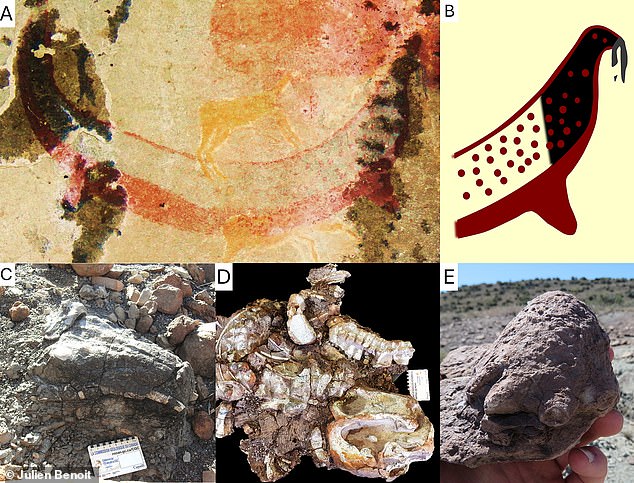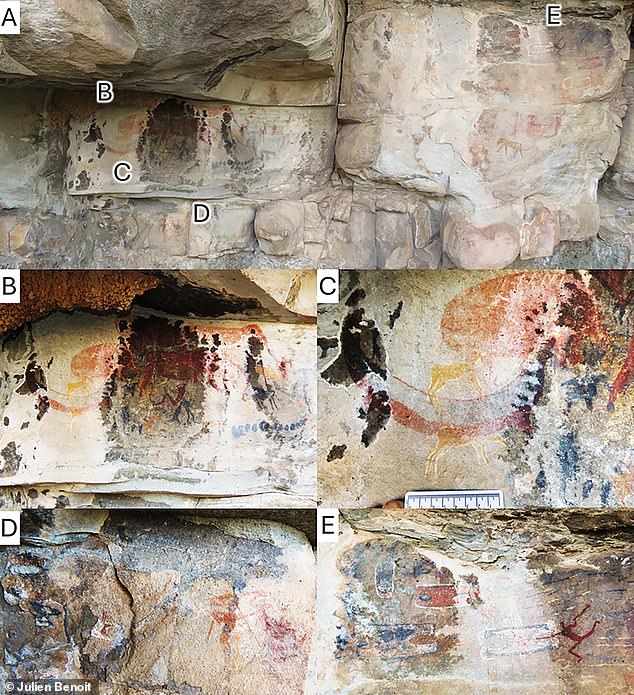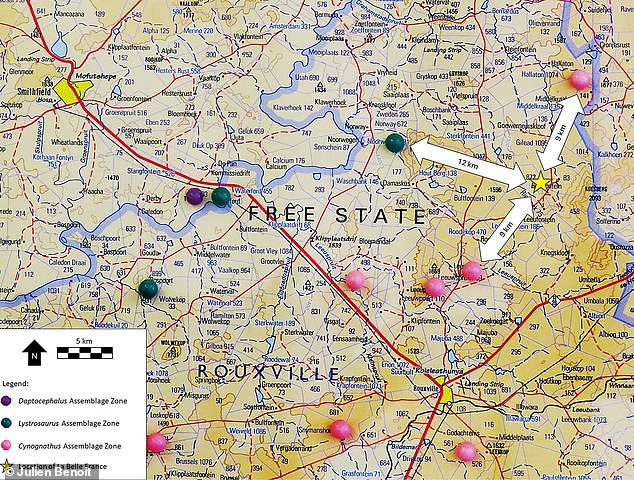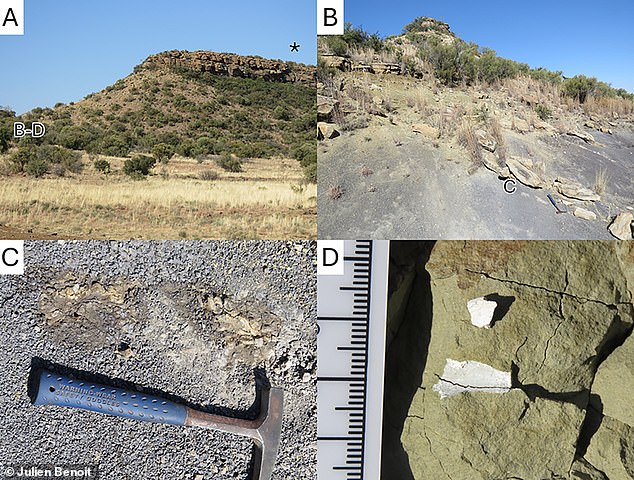Archaeologist discovers painting that may prove existence of mythical horned serpent
An archaeologist has discovered a 200-year-old rock painting that depicts an ancient horned serpent roaming the land.
This discovery adds to growing evidence suggesting that this mythical creature was more than just a legend.
Julien Benoit, a senior researcher at the University of the Witwatersrand, found the painting at La Belle France, a rock painting site in northern South Africa.
It appears to be an elongated animal with downward-facing tusks, and does not resemble any other living animal in the region today.
A rock art and unidentified fossils discovered in South Africa may confirm the existence of a legendary ‘horned serpent’

The paintings predate the first formal scientific descriptions of this horned snake, which were made in 1845, by about ten years.
Analysis showed that they were made between 1821 and 1835 by an indigenous group, the San.
According to San legend, this creature was a “rain animal” from the “spirit realm,” meaning it was likely involved in rain ceremonies, Benoit said. IFLScience.
However, scientists, including Benoit, think this myth may be based on real dicynodont fossils.
Dicynodontia are an extinct clade of terrestrial herbivores that typically bore a pair of tusks, hence their name, which means “two dog teeth.” They roamed the Earth from the Middle Permian to the end of the Triassic.
They probably became extinct during the mass extinction at the end of the Permian, which saw the extinction of most other therapsids—the larger clade of land animals to which Dicynodontia belongs.
Many fossils of dicynodonts have been found in the Karoo Basin, a 1.5 million square kilometer sedimentary basin in the central and southern part of South Africa.
La Belle France, where the painting was discovered, lies to the north of the Karoo Basin. However, the painting was found in the immediate vicinity of unknown tetrapod (or four-legged vertebrate) fossils.

The Horned Serpent Panel
Benoit published his findings this month in the journal PLOS ONE.
He believes the discovery of a fossil may have prompted the San to paint the horned serpent, based on an ancient legend in which their ancestors described these creatures as “great monstrous beasts, larger in size than the elephant or the hippopotamus.”
Together, the painting and the nearby fossils suggest “a case of indigenous paleontology,” Benoit wrote. Perhaps the San weren’t painting a fictional creature, but documenting a scientific discovery.
Benoit told IFLScience that “many cultures explored the world of fossils before Western scientists did.”

The rock art was discovered at La Belle France, a rock art site in northern South Africa

The fossils were found beneath the star in photo A, and fossils were found at the locations shown in photos B, C, and D.
“The Native Americans knew about the existence of fossils before colonization and interpreted them in different ways. Some claimed that they knew they came from long-extinct animals,” he said.
‘The San, in southern Africa, also collected fossils, as evidenced by the Bolahla rock formation, in which they found a dinosaur phalanx – which may be the first time a dinosaur bone has been discovered,’ he added.
Furthermore, the research suggests that the San made a painting of a dicynodont, that they incorporated at least some of the fossils into their belief system.
“During rain ceremonies, the San enter a state of trance and go to the realm of the dead to capture rain animals and bring rain back to the world of the living,” he said.
“By choosing a species like a dicynodont, which they knew was extinct and therefore dead, they probably hoped that this rain animal had more potential to bridge the two worlds,” he added.
But this painting alone is not enough to officially confirm that this legendary horned serpent actually existed, or that the unidentified fossils found at La Belle France are its remains.
More research is needed to determine whether this ancient monster is reality or fiction.
